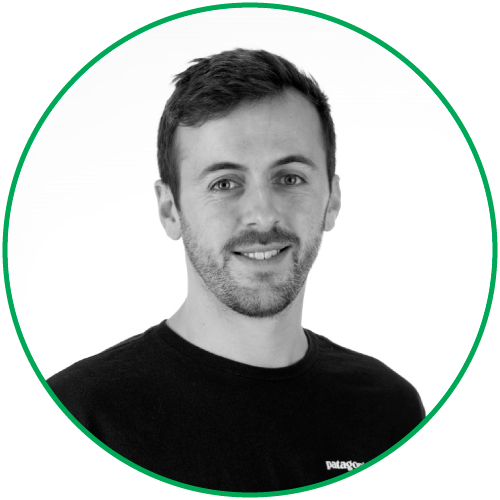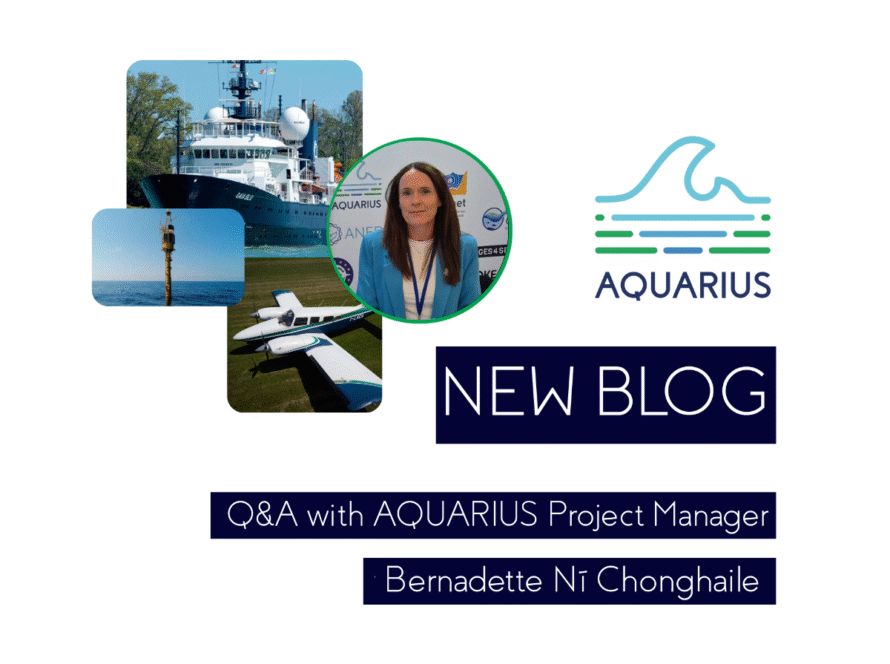

The Horizon Europe AQUARIUS project will be offering free access to 57 research infrastructures across Europe via two Transnational Access Funding Calls. In other words, this project is opening doors to link scientists with the infrastructures they need to produce important scientific research and data. To introduce the impressive suite of opportunities AQUARIUS is offering, a comprehensive Research Infrastructure Catalogue has been created and is now available on the project website.
In celebration of the catalogue’s launch, we talked with Frank Armstrong, the dedicated scientist behind its development and a Project Officer for AQUARIUS at the Marine Institute in Galway where he is part of the Research Vessel Operations team.
Before we get into the nitty gritty of the catalogue, what are you telling scientists about the AQUARIUS project?
AQUARIUS can offer free access to research infrastructures and training opportunities across Europe. Scientific research can be expensive and difficult to plan, but AQUARIUS has the funding and framework in place to enable scientists to carry out their work. So, if you are an environmental or marine scientist, check out the AQUARIUS-RI website for information about these incredible Calls and the Research Infrastructure Catalogue to learn about the impressive facilities and opportunities available.
- Transnational Access ensures free of charge transnational access to the best European research infrastructures. The access includes the logistical, technological and scientific support and the specific training that is usually provided to external researchers using the infrastructure.
- Remote Access (RA) is a form of Transnational Access in which the user(s) do not visit the infrastructure or installation physically themselves, instead the staff of the infrastructure or installation conducts the study/collects the samples/does the monitoring for the user(s) according to their research plan.
- Virtual Access (VA) means free and open access to stations’ data and databases for everyone, without selection or evaluation processes.
There sure is a lot of excitement around the AQUARIUS Transnational Access Calls, what exactly is AQUARIUS providing?
What we mean by providing transnational access is connecting scientists with research infrastructures across Europe. So, for example, an oceanographer from Norway might need access to a research vessel in the Mediterranean to conduct a research cruise off the coast of Italy or a French environmental scientist might need access to a drone from another country, or a specialised lab in yet another country. Making these connections is at the heart of the AQUARIUS project, and everyone is participating with a common goal of producing world class science that promotes the health and protection of our oceans, seas and freshwater ecosystems.
The term Research Infrastructure can convey a lot of things. What does it mean in the context of AQUARIUS?
There are 57 research infrastructures in total, including 18 research vessels, 12 marine mobile observation platforms (e.g., Gliders, AUVs, ROVs), 11 fixed marine facilities, 5 river and basin super sites, 5 experimental research facilities, 3 aircraft, 2 drones, and 1 satellite service available for access.
AQUARIUS is combining services through what we call an integrated approach. We want to see research projects utilise a suite of these infrastructures to foster collaboration across Europe. So, for example, if scientists are studying harmful algal blooms in the North Sea, then they might use a research vessel for taking ocean samples, an autonomous glider for profiling the water column and an aircraft or satellite for imaging the extent of a bloom. This integrated approach will mean that research projects will be able to take advantage of a multitude of state-of-the-art infrastructures on offer through AQUARIUS across Europe, allowing scientists to tackle their research questions from different angles.
With 57 Research Infrastructure featured in the catalogue, it must have been a challenge to create. How did you go about developing it?
Deciding on how best to design the catalogue has been the most challenging aspect of my role in AQUARIUS, and the most satisfying. I was familiar with certain types of infrastructures such as research vessels, ROVs and gliders, but there are many other facilities and services in the AQUARIUS suite that I needed to learn more about.
So, I got in touch with participating research infrastructure providers across Europe, asking them what kind of information is important for scientists and researchers to know to make optimum use of the infrastructures and to help them decide which infrastructure best suits their scientific requirements. During these consultations, and from building on ideas from previous transnational access projects, we designed profile templates that were used to gather the important details and information. This was a very time-consuming, detail-oriented phase of the project but through good collaboration, I think it’s been very successful. I am proud of this catalogue because it highlights European research infrastructures and their operators who are committed to supporting researchers in their scientific endeavours and ensuring high-quality data that benefits numerous initiatives and, ultimately, society.
What have you enjoyed most about developing the catalogue?
I’ve enjoyed learning about all the different research infrastructures we have on offer, learning about drones and aircrafts and labs across Europe; I find it all very interesting. I’ve been fascinated with the satellite service provided by our Belgian partners Vito, called Terrascope. Terrascope offers the processing of Sentinel-2 satellite tiles, allowing scientists to study the levels of chlorophyll, turbidity and particulate matter in the ocean, seas and waters. Each tile covers an area of 110 x 110 km, and the entire Earth is divided into these tiles, demonstrating the extensive capabilities of this infrastructure.
What advice would you give to interested scientists to help them be successful with their application (proposal)?
To help scientists succeed with their proposals, we recommend attending our brokerage events, which will be held both in person at marine science meetings and events, and virtually via webinars throughout the project. These events are an excellent opportunity for interested scientists to connect with AQUARIUS infrastructure operators and discuss potential projects and collaborations. By attending, scientists can learn more about the specific capabilities and limitations of different infrastructures, enabling them to craft well-informed proposals with realistic and achievable goals. We encourage any scientists considering responding to the TA calls to join these events, meet with us, and engage directly with the infrastructure operators. Scientists can also reach out directly to the infrastructure operators by email and we would encourage them to do so, to ensure the infrastructure they’re applying for is suitable for their needs. Operators’ contact details are available on the AQUARIUS website in the catalogue.
What do you think the legacy of AQUARIUS will be?
With such a diverse range of infrastructures and so many project partners making up the AQUARIUS consortium, there will be strong scientific outputs, and these will contribute toward promoting the health and protection of our ocean, seas and freshwater ecosystems. So, the legacy of AQUARIUS will be in the science that it produces.
And the science will continue to develop through the synergies created by connecting scientists across Europe—researchers who’ve been successful in the calls working with the operators of Research Infrastructures—those are the sort of networks that will evolve in the future. So, it’s another important legacy of the AQUARIUS project.
And, the catalogue of course will be a great legacy of AQUARIUS – a comprehensive look at state-of-the-art facilities around Europe which are open to collaborating and sharing in the name of science.

Frank Armstrong
Frank Armstrong is a Marine Science graduate from the University of Galway. He has cultivated a diverse career spanning several key areas in marine research and conservation. His professional experience includes working on sea turtle conservation projects, as a fisheries observer in Scotland, as a phytoplankton taxonomist, and more recently, in research vessel operations, assisting in the planning and execution of survey schedules for Ireland’s national research vessels, RV Tom Crean and RV Celtic Explorer.
Frank’s career has provided him with a comprehensive understanding of Marine Science from both academic and industry perspectives. Drawing on this extensive experience, he now plays a key role in the AQUARIUS project, where he supports project coordination and facilitates transnational access for international scientists and researchers.
1st Brokerage Event
10 September 2024
Gateshead, UK
side-event to ICES ACS
2nd Brokerage Event
1-3 October 2024
Malaga, Spain
MonGOOS workshop
Mediterranean Oceanographic Network of GOOS
3rd Brokerage Event
23-25 October 2024
Constanta, Romania
Blue Growth: Challenges and opportunities for the Black Sea
4th Brokerage Event
6 November 2024
11.00 – 12.00 CET – Online Zoom webinar
To include Q&A ahead of opening of first TA Call (Nov. 11)



